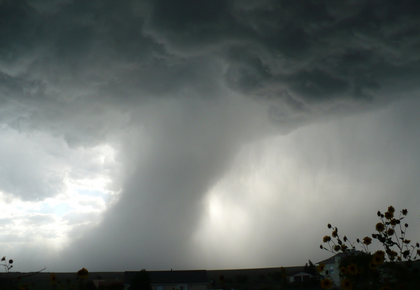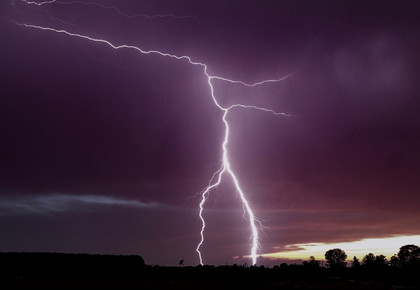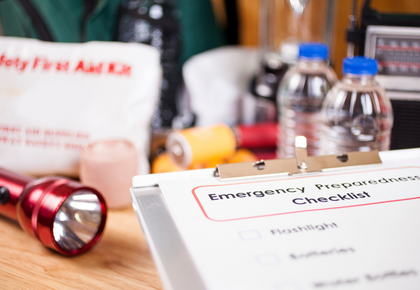Missouri Tornado Season: Tornado Preparation Tips to Help Keep Your Family Safe
Summertime is the perfect time for all outdoor activities. Whether it’s family barbecues, trips to the beach, or ice cream trucks, you can be sure to enjoy it. However, the summertime is also peak season for tornadoes and with Missouri being in the top 10 states for annual average number of tornadoes, it’s very important to know the best ways you can educate yourself should you ever find a raging – and possibly deadly – twister storm in front of you.
“Of course, you can’t prevent tornadoes, but you can make sure your family and home are as prepared and ready as possible, especially if you live in a tornado-prone region,” said Christine Lentz, President of FirstService Residential Missouri/Kansas. “Even if a dangerous storm arises without warning, there are things you can do to minimize potential injury and damage and get through it as safely as possible.”
If you’re a member of your homeowners association board, you’ll want to take additional measures to protect your residents and property as well. One of the most important things you can do is make sure your residents are informed about the risks of dangerous storms and how to respond.
Ways to keep emergency preparedness top of mind for your residents include providing emergency response information on a regular basis, perhaps within a quarterly newsletter. For more in-depth information, you can prepare a handbook that is updated on an annual basis and provided to residents and/or housed in easy to find places throughout the community. When severe weather is on its way, we also recommend sending out a notice to remind residents of anything they should do ahead of the storm. For example, if living in a high-rise community it’s important to remind residents to remove anything from their balconies that could get picked up by the wind that could become a real danger to residents and cause additional damage.
If your community is partnered with a quality property management company, you can rely on them to assist with immediate communications to residents during an emergency using a system that can send texts, emails, and phone calls. Let’s take a look at some of the things you, as a board member, should be communicating to residents about what they should do to prepare for severe weather.

“Of course, you can’t prevent tornadoes, but you can make sure your family and home are as prepared and ready as possible, especially if you live in a tornado-prone region,” said Christine Lentz, President of FirstService Residential Missouri/Kansas. “Even if a dangerous storm arises without warning, there are things you can do to minimize potential injury and damage and get through it as safely as possible.”
If you’re a member of your homeowners association board, you’ll want to take additional measures to protect your residents and property as well. One of the most important things you can do is make sure your residents are informed about the risks of dangerous storms and how to respond.
Ways to keep emergency preparedness top of mind for your residents include providing emergency response information on a regular basis, perhaps within a quarterly newsletter. For more in-depth information, you can prepare a handbook that is updated on an annual basis and provided to residents and/or housed in easy to find places throughout the community. When severe weather is on its way, we also recommend sending out a notice to remind residents of anything they should do ahead of the storm. For example, if living in a high-rise community it’s important to remind residents to remove anything from their balconies that could get picked up by the wind that could become a real danger to residents and cause additional damage.
If your community is partnered with a quality property management company, you can rely on them to assist with immediate communications to residents during an emergency using a system that can send texts, emails, and phone calls. Let’s take a look at some of the things you, as a board member, should be communicating to residents about what they should do to prepare for severe weather.
-
Know the Lingo
Brush up on what certain terms mean when reading news on the weather. When a tornado or other hazardous storms are near, meteorologists or weather channels will often use terms such as “severe thunderstorm watch” or “severe thunderstorm warning”. The former is more significant because it means that a severe thunderstorm could be near your home, while the other means a radar has shown a storm is or will involve high-capacity winds and other conditions, which could cause potentially significant damage, including tornadoes. Sometimes, a “tornado watch” may also be announced, which should put you on higher alert for your emergency plans to be put into action. The tornado warning will be issued when a funnel cloud is sighted or picked up by a radar. If this is the case, take shelter immediately.
-
Look for Signs
Tornadoes don’t need the help of a thunderstorm to be formed. Some initial signs of a possible tornado include dark or green-colored skies (bruise like coloring) or a low-flying cloud that looks large and dark. Another way to know is if you hear noises that sound like a rumbling freight train. These are the top tornado indicators, so take shelter immediately if you notice or hear any of these warnings.
An actual tornado will look like a funnel cloud and can be seen from a distance. In this case, take shelter immediately. If you have the time, alert your local newsroom, but not at the expense of your safety. If the tornado seems to move closer, get to safety quickly.

-
Make a Plan
Have a mindset that looks at tornadoes as a “when, not if” situation. Making a plan will ensure that you are able to react quickly and in a calm way if you ever deal with a tornado coming in your direction. Look at your home and seek where the best place would be to hide if a twister should strike. An ideal location would be one without windows and on the lowest floor of your home, such as a basement (or a storm shelter if you have one). Other locations include the first-story room without windows such as a hallway, bathroom, or closet. Conduct tornado drills, especially if you have a family, so everyone knows where they should go immediately. Also, make sure everyone knows how to shut off the power, water, and gas. Keep a family first aid kit ready as well as a fire extinguisher on hand. Finally, keeping fresh batteries stored in these locations can be a lifesaver if the power goes out and you need to use them for flashlights, or battery-powered radios.

-
Make a List
Have a notebook full of important information near the emergency location, including contact numbers and names of your close neighbors, insurance agents, community association managers, and a landlord if you have one. Also, have your insurance policy numbers and medical information of every family member.
To go further, have your vehicle or bank account number, and instructions as to how to retrieve emergency storm information from a radio or TV if the connection goes out and you cannot use your phone. Keep a folder filled with copies of birth certificates, insurance policies, wills, home contents, and social security cards that are then stored in a water- and fire-proof safe at your bank.
-
Take Shelter
- Depending on where you are in your home during a tornado watch, find shelter in your safe room.
- If you have extra blankets, thick sleeping bags, or mattresses, you can use these to prevent yourself and your family from any flying objects or glass. If a sturdy table is in the room, everyone should get under it.
- If you’re in your car, don’t try to outrun the tornado – you can’t. Instead, pull over – preferably in an area that is lower than the road – and secure your safety belt, lower your head below window level and cover your body with a blanket or jacket. Don’t try to park beneath a bridge or overpass – they’re actually not as safe as they may appear.
- If you’re outdoors on foot, seek shelter immediately – even if it’s inside a stationary vehicle. As a last resort, lie down in the lowest-lying area of ground you can find and cover your head with your hands.
- Depending on where you are in your home during a tornado watch, find shelter in your safe room.
These five tips are good starting off point to help you prepare for the worst possible scenarios. For more valuable storm safety information and guidelines, check out the helpful government resources below:
Centers for Disease Control
Red Cross
Department of Homeland Security
Occupational Safety and Health Administration